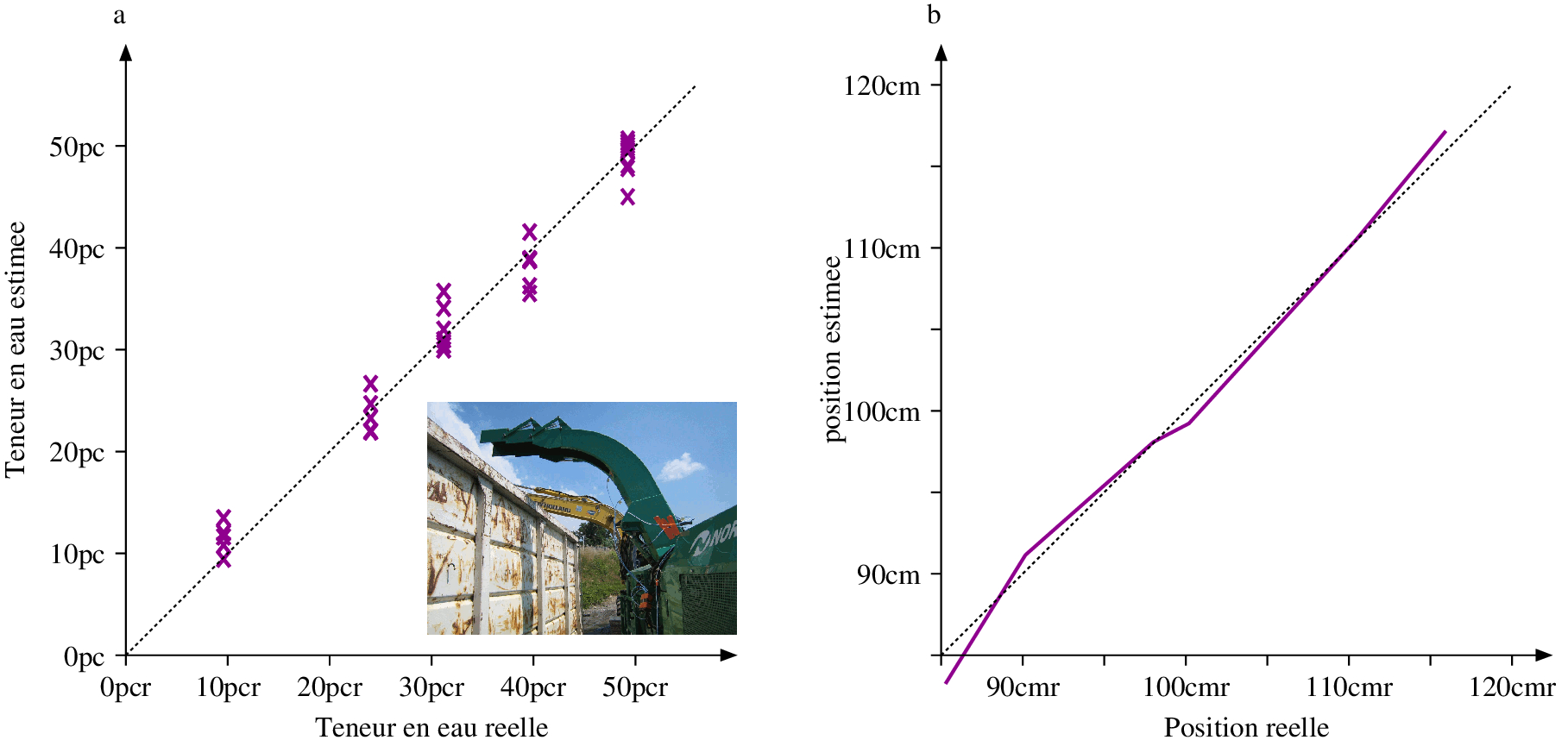T. Ditchi, E. Géron, J. Lucas, Y. Oussar
In the microwave range, we have developed an adaptive antennae for DECT telecommunications (see Figure 1). The advantage of using adaptive antennas is to deliver energy only where necessary then increasing the range or to avoid perturbation sources then improving the transmission efficiency. The system novelty consists in the algorithm used to calculate gains and phases required at each antennae from a goal obtained by an automatic estimation of the user position and needs through the DECT traffic.

- Fig 1 : (a) Complete adaptive antennae system. (b) Obtained results for two users, one at 85° and the other at 115°.
We have gradually focused on the study of meta-materials for radio-communication applications . Meta-material are microstructure materials that have negative permeability and/or permittivity then exhibiting interesting characteristics such as forbidden propagation bands or phase propagation opposite to energy propagation. In the case of high frequency couplers for instance, conventional systems are made of two parallel lines of given length, the coupling factor directly depending on the gap between the lines and the operating bandwidth on the line length. We have shown that a structure made of one right-handed material line near a line made of consecutive right-handed and left-handed material cells, yields to a better coupling for a given gap which also depends on the number of cells as shown in Figure 2a. It has thus brought us to imagine and realize an electronically controlled coupler by PIN diodes which behaviour is presented in Figure 2b.

- Fig 2 : (a) Measured coupling factor and transmission factor as a function of the number of cells at 2.45 GHz. (b) Coupling factor as a function of frequency when the PIN diode connected between cells 2 and 3 is commuted. The coupler factor goes from -4 dB to -8 dB in the bandwidth, around 2.45 GHz.
For obtaining such results, it has been necessary to well understand to propagation of electromagnetic waves in complex linear meta-materials. For that purpose we have developed mathematical tools for recovering the signal phase when it is unreachable by conventional instruments, especially in forbidden bands. Though Kramers-Kronig relations connects real and imaginary parts of a causal signal, we have preferred to work on an adaptation to amplitude and phase of such relations since it is more appropriate for propagation phenomena. As a result, Figure 3a presents a comparison between calculated and measured phases of a meta-material line. In the forbidden band the measurement shows erratic results whereas in the allowed band both calculation and measurement are in agreement. That also makes it possible to recover phase when only power measurements are possible as illustrated in Figure 3b.

- Fig 3 : (a) Comparison between measurement and calculation. The measurement apparatus delivers erratic results below 1 GHz corresponding to a forbidden band. (b) Amplitude and phase comparison between a network and spectrum analyzers. The phase of the spectrum analyzer has been reconstructed from calculations.
We have also worked on various sensors using microwaves through OMICAGE ANR project and a topic that has began with the ARCOS project.
The aim of the first project was to measure the water content in wood-chips during the shredding. It has to be said that wood-chips are one of the best renewable energy source since they require only 3% of energy input and the potential production in France can be as high as 10% of all the energy needs. But water content has to be measured for the development of the wood-chip industry. Figure 4a presents our results for the OMICAGE ANR project, one of the first realization of that kind.
During the ARCOS project, we had developed an efficient cooperative system for determining a vehicle position on the road in order to limit the number of run-off-road accidents which leads to almost 30% of fatalities in France. However the system had some problems for practical industrialization, then we have continued to work on the subject to workaround those problems. Figure 4b shows some preliminary results. A patent application is currently under consideration.

- Fig 4 : (a) Estimation of the water content in wood-chips during the shredding. The estimation error is only 5% for 4-s measurement. In the inset, a photography of our system into action in real conditions. (b) Estimation of a vehicle position by a cooperative approach to prevent run-off-road accidents. The estimation error is about 2 cm, a sufficient accuracy for real time position control and correction.

